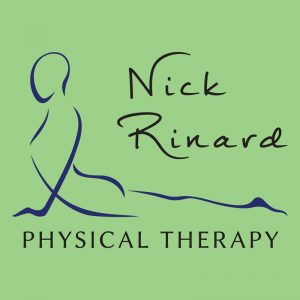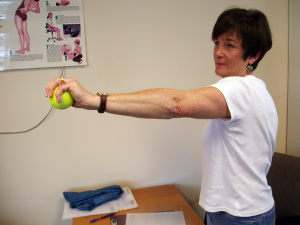Get your sleep back by calling and scheduling your evaluation at Nick Rinard Physical Therapy today.
“I was not able to walk my usual 2 miles a day and I was having pain all day and night in the thigh.
Because I could not massage it out, I figured it was a spinal referral pain.
Having been “fixed” by the McKenzie Method of lower back pain after a fall in 2014, I asked my provider for a referral here.
I can walk as much as I want now. I can sleep with no pain.”
Tenny
More
As a PT student exposed to the McKenzie Method for the first time, I observed therapeutic results that appeared miraculous in their efficiency and expediency. It was eye-opening to learn the principles of MDT and the systematic logical approach to classifying and treating notoriously difficult-to-treat conditions including chronic debilitating back pain. Many patients I observed confessed they had battled back pain for decades and tried everything, including pharmacology, chiropractic, acupuncture, massage, as well as craniosacral therapy.
When I was injured in a car accident, I received McKenzie treatment and felt better within the first 2 weeks. In this car accident, I had been rear-ended at high velocity on the freeway, and was recovering from a fracture. My treatment included rest (lying down for 10 minutes) to reduce inflammation and gentle range of motion exercises. This was doable despite a busy schedule and I was able to resume my regular workload sooner than anticipated.
Previously, I had been rear-ended twice at lower velocities, and pursued chiropractic and massage treatment both times. Chiropractic involved 3 visits per week initially, and went on for a year. This took a lot of precious time out of my schedule and came at a high financial expense. At the time, I noticed I felt better whenever I stayed active, but the sharp pain in my neck and back returned several times per week. I felt unable to manage my pain and thought I needed the chiropractor to “fix me.”
 At Nick Rinard Physical Therapy I achieved a pain free full return to function in less than 2 months. Over the last 4 weeks, I only required 2-3 visits and was able to manage exacerbations of pain mostly on my own since I knew what exercises would provide relief. In addition to effective treatment, I was happy with the way Nick and his team treat everyone. I always felt welcome and appreciated, like a member of the family.
At Nick Rinard Physical Therapy I achieved a pain free full return to function in less than 2 months. Over the last 4 weeks, I only required 2-3 visits and was able to manage exacerbations of pain mostly on my own since I knew what exercises would provide relief. In addition to effective treatment, I was happy with the way Nick and his team treat everyone. I always felt welcome and appreciated, like a member of the family.
As both a student and patient of MDT, I am thrilled at the results it provides.
Patient perspective:
McKenzie is initially less hands-on compared to other PT approaches. The patient is an active participant in healing, and engages in a personalized home program from day one. Education is an integral aspect of treatment. This empowers the patient to understand the cause of their ailment, and provides the patient with tools to remedy recurrences or exacerbations. McKenzie treatment is a great investment of a patient’s time and funds, as it provides a toolkit to effectively self-manage pain.
Physical Therapist (PT) perspective:
McKenzie therapy is a disciplined classification system with a logical testing protocol that guides treatment. The classifications and associated interventions and progressions can be applied to many health conditions. Having a clear protocol helps the therapist stay focused and effective when the clinical presentation appears unclear. MDT includes the patient as an educated, active partner and decreases patient dependency on passive treatment mechanisms. Patients tend to obtain good results quicker and need fewer visits compared to other therapeutic approaches. MDT is based on understanding the mechanical and physiologic events of spinal derangements, altered tissue, and inflammation. It is logical and effective.
How MDT is different:
McKenzie therapy provides a clear, well-organized protocol to assess, classify, and treat health conditions appropriate for physical therapy. Treatment consists of limited, low-dosed and highly targeted exercises designed to provide clarity of diagnosis. This serves as the dependent variable whose effect is measured and helps clarify the clinical picture. Patient’s response to treatment is generally assessed within 48 hours, and fine-tuned/altered/progressed according to findings. Due to this disciplined and focused approach, MDT frequently resolves common conditions including back pain and neck pain in less visits, and therefore at substantial financial and time savings.
More
 Lateral epicondylitis, more commonly known as “tennis elbow,” is a pathology that is familiar to physical therapists and the general public. What is lesser known is “pseudo tennis elbow,” a mechanical problem with a very simple solution! Unfortunately, therapists whom are not familiar with the utilization of mechanical diagnosis may unknowingly miss this common elbow derangement. As a therapist practicing the McKenzie method of mechanical diagnosis, I have diagnosed BOTH of my current elbow pain patients as derangements (or pseudo tennis elbow).
Lateral epicondylitis, more commonly known as “tennis elbow,” is a pathology that is familiar to physical therapists and the general public. What is lesser known is “pseudo tennis elbow,” a mechanical problem with a very simple solution! Unfortunately, therapists whom are not familiar with the utilization of mechanical diagnosis may unknowingly miss this common elbow derangement. As a therapist practicing the McKenzie method of mechanical diagnosis, I have diagnosed BOTH of my current elbow pain patients as derangements (or pseudo tennis elbow).
Symptoms
Our patient, “Jane” presented to therapy with intermittent right elbow pain, worsening over the last 3 months. Jane reported difficulty with gripping, lifting, carrying and global limited function of the right arm. Jane described symptoms as “variable” meaning she could perform a task that produced his elbow pain. Then, perform the same task or movement again without experiencing any pain at all! This variability of pain is the hallmark of a derangement and should not be misdiagnosed as a tendonitis, which would indicate inflammation (in which case pain would be constant). Jane rated worst elbow pain as a 6/10.
Physical Therapist Evaluation & Findings
Objective findings included pain with passive elbow flexion and extension as well as pain with active wrist extension and with gripping a tennis ball. Because of my experience as a mechanical therapist, I am familiar with a technique called a mobilization with movement (MWM), developed by Brian Mulligan (a colleague of Robin McKenzie). The mobilization provides a lateral force over the ulna at the elbow joint. While the patient applied this force, she was able to grip the tennis ball PAIN FREE! This same technique was applied for other painful baselines and achieved the same results of ABOLITION OF ALL PAIN! This ability to turn symptoms off with a mobilization indicates an elbow derangement and the MWM is used as the treatment strategy.
Patient Homework and Outcomes
Jane was asked to perform the MWM utilizing the lateral glide while gripping a tennis ball to be performed 10-20 times every hour. The theory is that this mobilization is repositioning the joint in order for it to articulate correctly, resulting in improved range of motion and strength after. Jane returned to the clinic the next day with reports of at least 25% improvement! Objective findings were retested and nearly all baselines had improved in less than 24 hours! Jane returned 1 week later and reported an 85% overall improvement with symptoms.
Get Your Own Mechanical Assessment
Don’t be misdiagnosed! Straightforward pathologies which require one exercise to treat are commonly missed with standard treatment. This results in extra therapy visits, and more of your time and money. It is worth your time to see if your pain has a MECHANICAL component. A simple solution may otherwise be missed.
More

 At Nick Rinard Physical Therapy I achieved a pain free full return to function in less than 2 months. Over the last 4 weeks, I only required 2-3 visits and was able to manage exacerbations of pain mostly on my own since I knew what exercises would provide relief. In addition to effective treatment, I was happy with the way Nick and his team treat everyone. I always felt welcome and appreciated, like a member of the family.
At Nick Rinard Physical Therapy I achieved a pain free full return to function in less than 2 months. Over the last 4 weeks, I only required 2-3 visits and was able to manage exacerbations of pain mostly on my own since I knew what exercises would provide relief. In addition to effective treatment, I was happy with the way Nick and his team treat everyone. I always felt welcome and appreciated, like a member of the family.